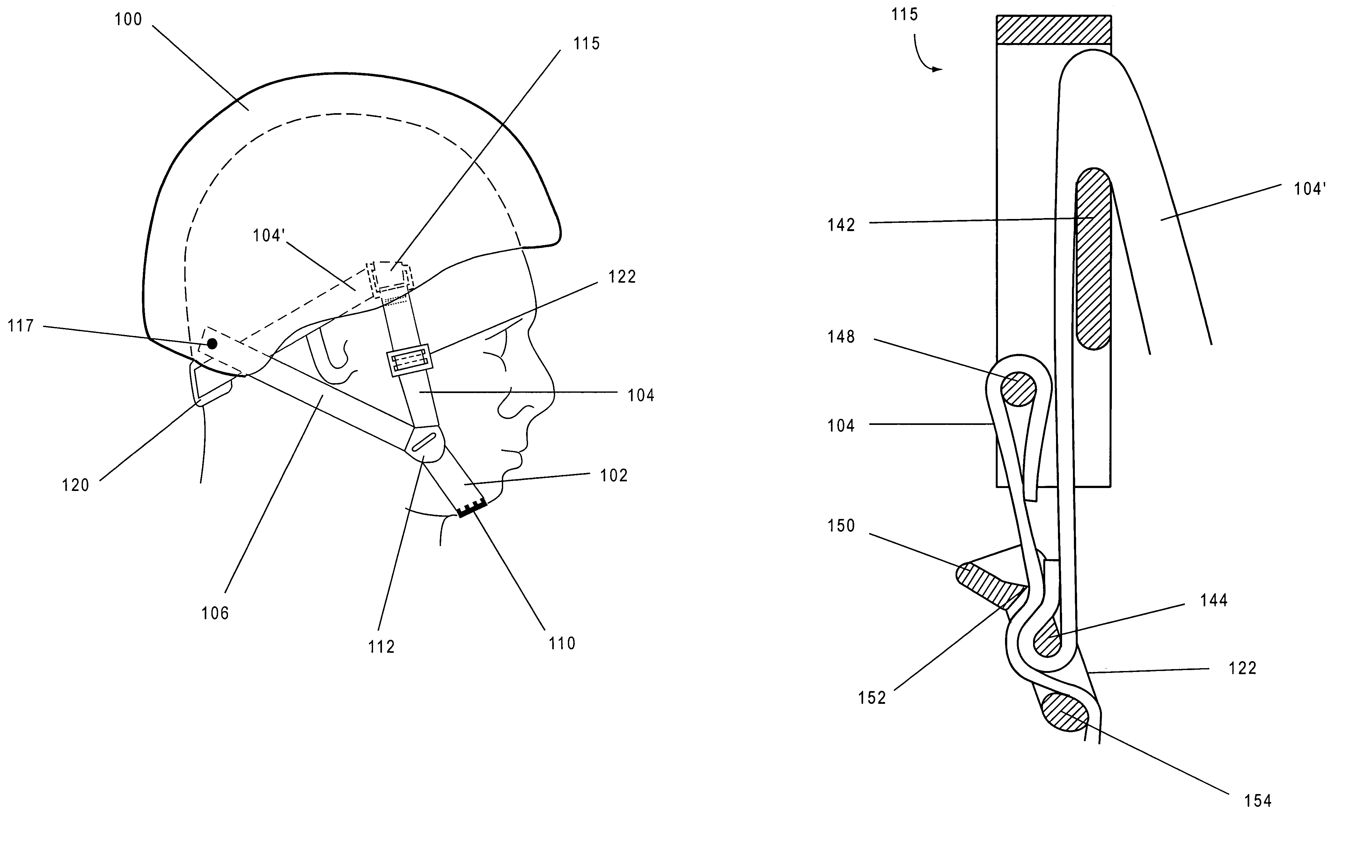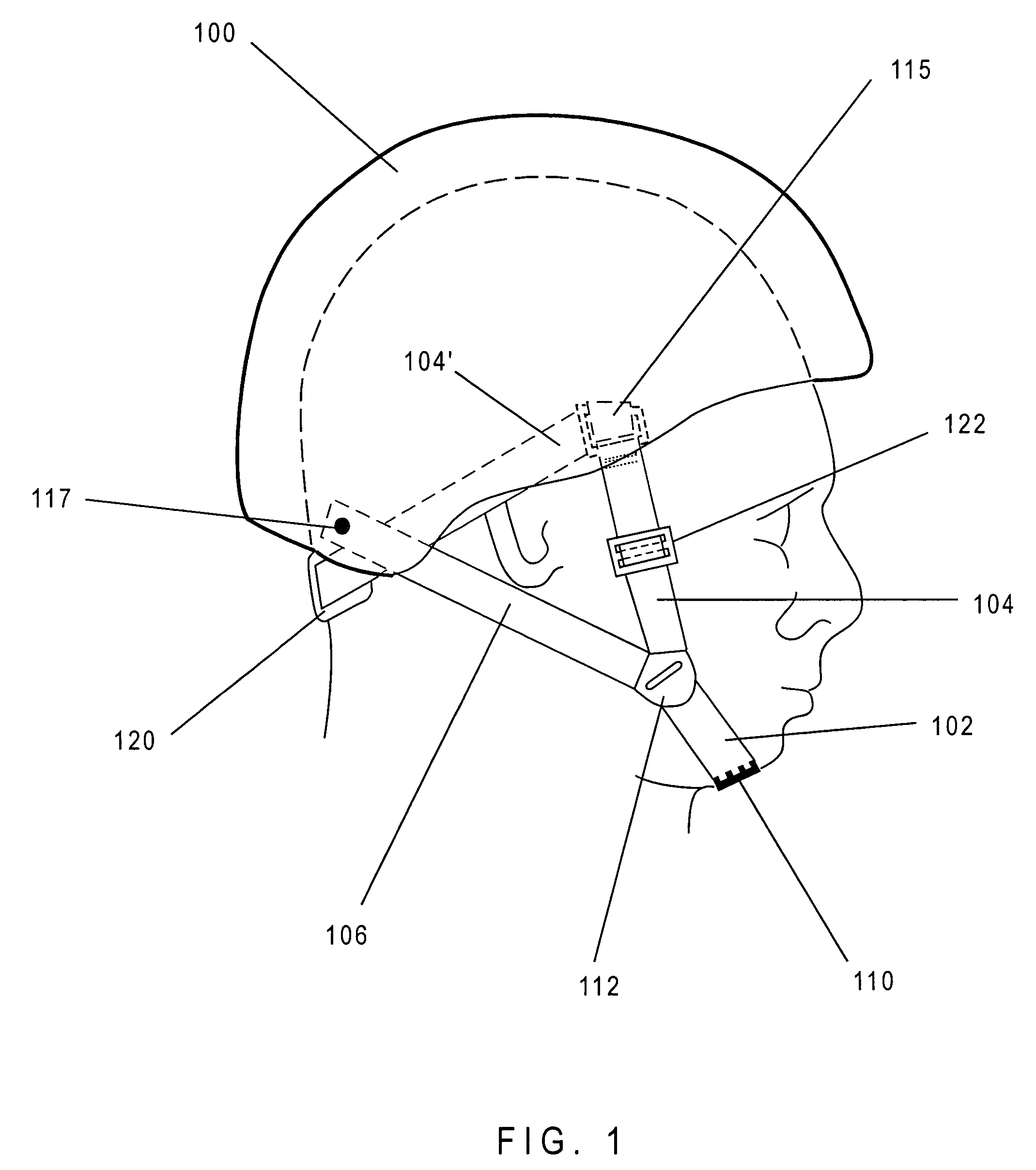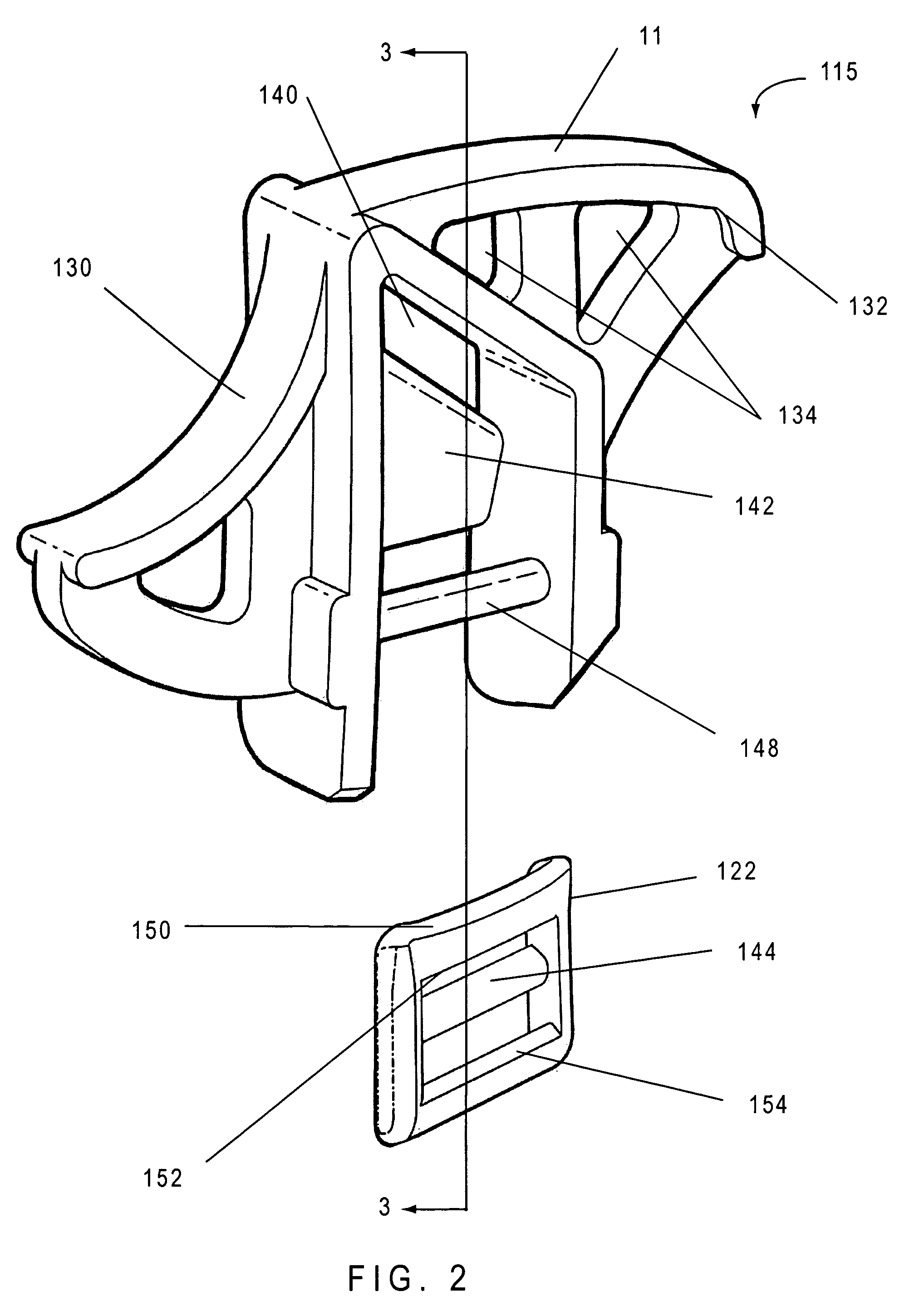Retention system for safety helmet
a technology of safety helmets and retention systems, applied in the field of safety helmets, can solve the problems of inconvenient operation, inconvenient adjustment of different fits, and inability to ensure the fi
- Summary
- Abstract
- Description
- Claims
- Application Information
AI Technical Summary
Benefits of technology
Problems solved by technology
Method used
Image
Examples
Embodiment Construction
[0022]With reference to FIG. 1, a helmet shell 100 is shown from the right side of the wearer's head (the left side having symmetrical features and configuration). Flexible straps 102, 104, 106 form a “Y” configuration and are joined with matching straps (not shown) on the opposite side of the helmet and attached at the neck or chin with an adjustable buckle 110 of conventional design. The middle junction point 112 of the retention straps is fixed by a clip or by sewing the straps 102, 104, 106 together such that they can flex, but cannot slide relative to one another. The retention strap 104 is secured to an attachment-mechanism coupling 115 at a point forward of the wearer's ear. The other upward strap 106 is secured to the helmet 100 at a rearward attachment point 117 behind the wearer's ear; engagement of strap 106 to the helmet at point 117 preferably occurs at the inside surface the helmet shell 100 by means of, for example, a rivet or other retention element. An adjusting str...
PUM
 Login to View More
Login to View More Abstract
Description
Claims
Application Information
 Login to View More
Login to View More - R&D
- Intellectual Property
- Life Sciences
- Materials
- Tech Scout
- Unparalleled Data Quality
- Higher Quality Content
- 60% Fewer Hallucinations
Browse by: Latest US Patents, China's latest patents, Technical Efficacy Thesaurus, Application Domain, Technology Topic, Popular Technical Reports.
© 2025 PatSnap. All rights reserved.Legal|Privacy policy|Modern Slavery Act Transparency Statement|Sitemap|About US| Contact US: help@patsnap.com



